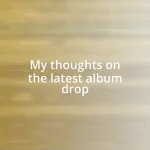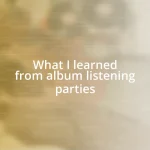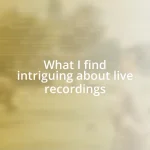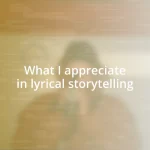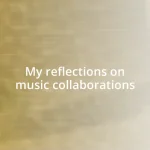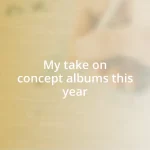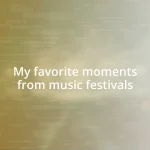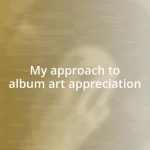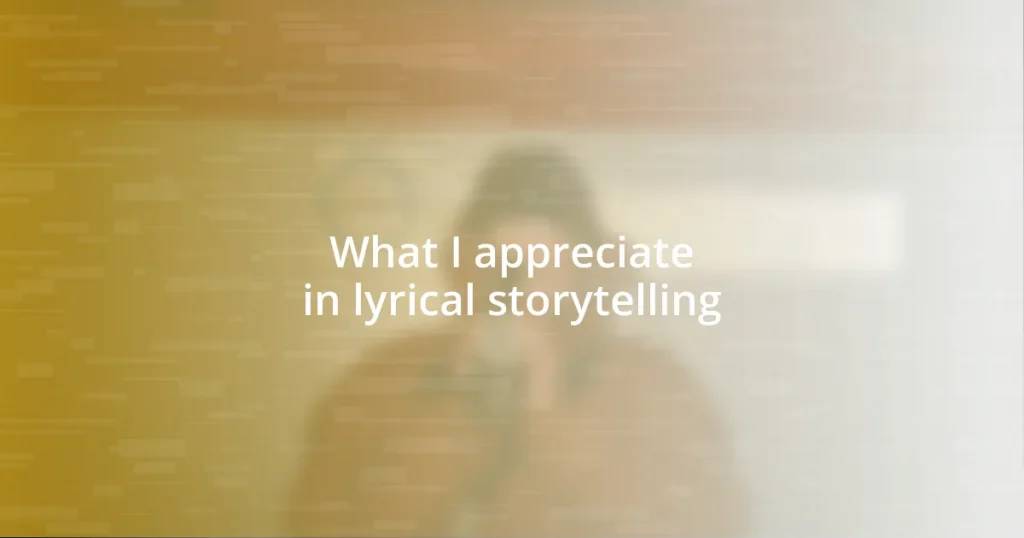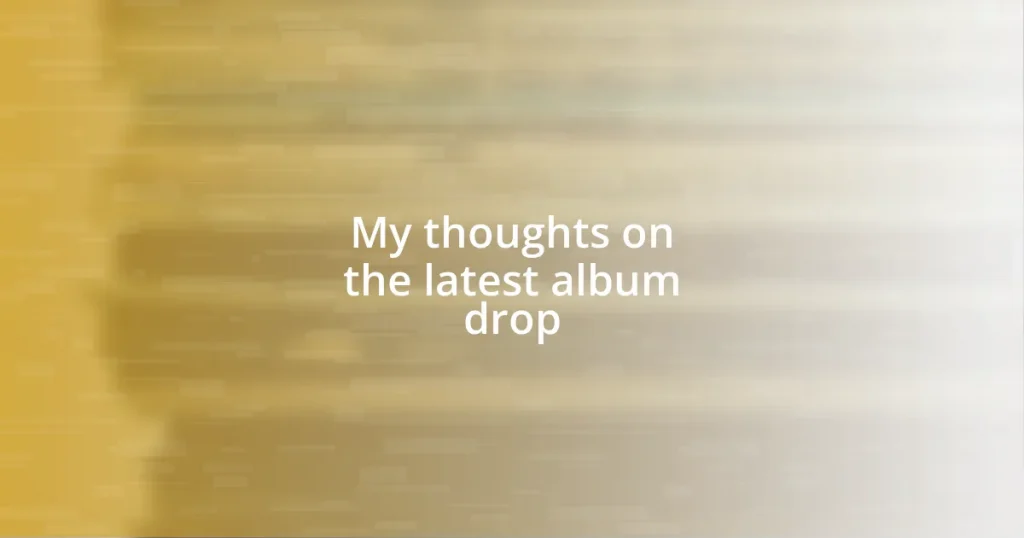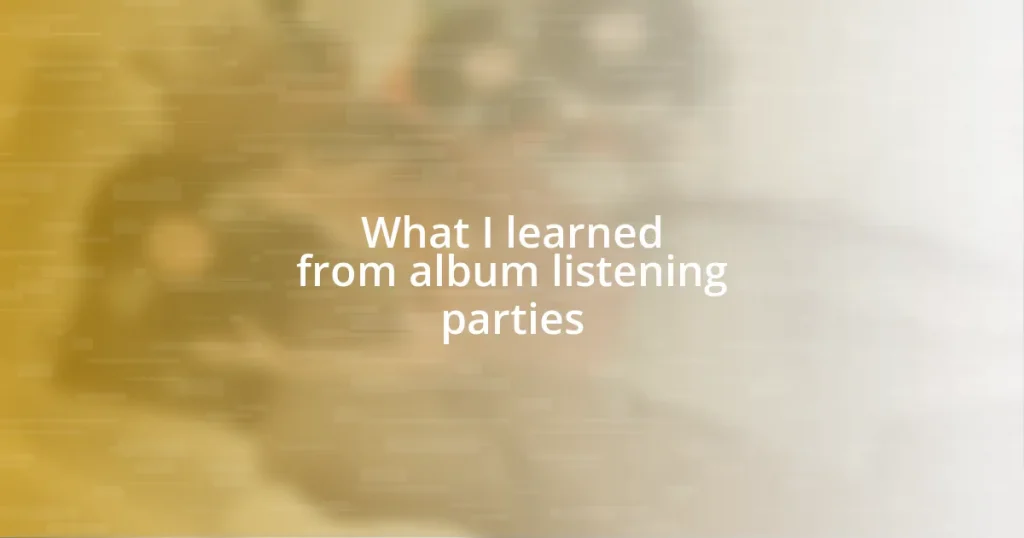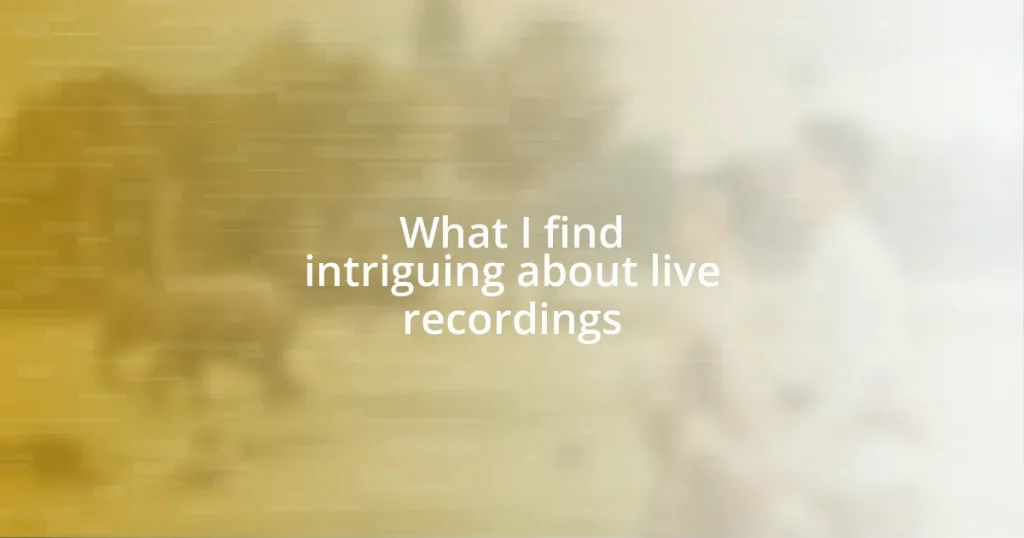Key takeaways:
- Lyrical storytelling blends poetry with narrative, creating emotional connections through relatable experiences and imagery.
- Key elements include vivid imagery, emotional resonance, and a structured narrative that engages listeners.
- Techniques like metaphor, repetition, and sensory details enhance the depth and relatability of the lyrics.
- Character development and distinct voices enrich the storytelling, inviting listeners to connect deeply with the narrative.
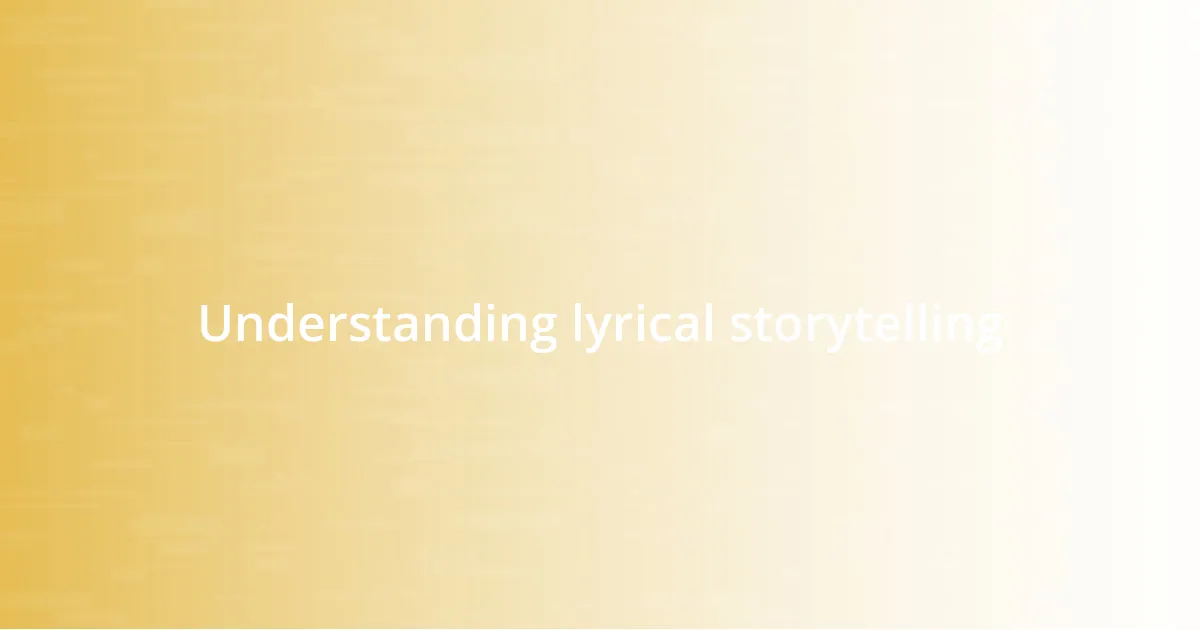
Understanding lyrical storytelling
Lyrical storytelling is a distinct art form that blends poetry with narrative elements, creating a rich tapestry of emotion and imagery. When I listen to a song that tells a story, I often find myself transported to another world, feeling every twist in the plot as if I were experiencing it firsthand. Have you ever felt that pull into a song’s narrative? It’s a powerful connection that bridges the gap between the artist and the listener.
What fascinates me about lyrical storytelling is its ability to convey profound truths through simplicity. I remember hearing a particular track that captured the essence of heartbreak with just a few poignant lines. The way each word was chosen so deliberately made the emotion resonate deeply within me—almost as though it was my own story being told. Have you experienced a song that encapsulated a significant moment in your life?
In many ways, lyrical storytelling acts like a mirror, reflecting our own experiences back at us. I recall a time when a friend’s breakup felt articulated perfectly in a song’s chorus. It made me realize how shared narratives, expressed through music, can provide solace and understanding in moments of vulnerability. Isn’t it incredible how a few carefully crafted phrases can evoke such clarity and connection?
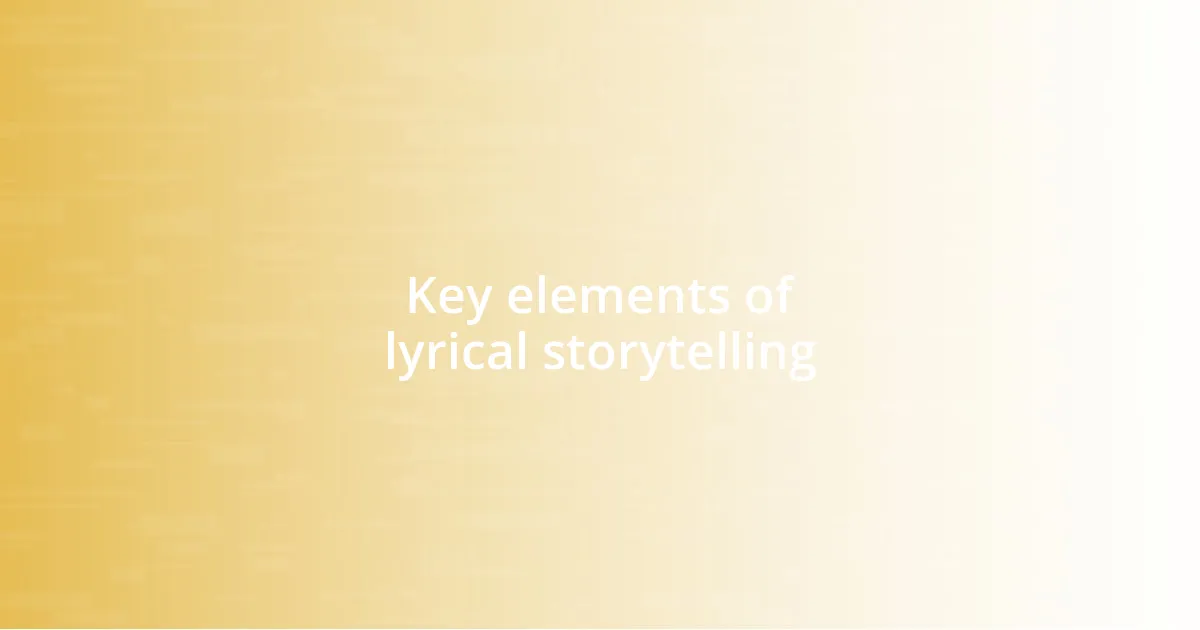
Key elements of lyrical storytelling
Lyrical storytelling thrives on vivid imagery that paints a picture in the listener’s mind. I love how a well-crafted line can evoke a scene, making me feel like I’m right there with the characters. Think about how certain lyrics can transport you to a bustling street or a serene lakeside; isn’t it fascinating how just a few words can create a whole world?
Another cornerstone of this art form is emotional resonance—it’s about how lyrics encapsulate feelings that are at once universal and intensely personal. I recall listening to a song after a long day, feeling particularly isolated. The artist’s raw expression of loneliness struck a deep chord within me. That shared emotional journey reminds me that others understand and articulate feelings I sometimes can’t express myself.
Lastly, lyrical storytelling often employs a narrative structure that guides the listener through a journey. I remember a song that unfolded like a great novel, with a clear beginning, middle, and end. Each verse drew me deeper into the plot, with twists that kept me on my toes. Isn’t it remarkable how music can mimic the best elements of storytelling, making you hang onto every word?
| Key Elements | Description |
|---|---|
| Imagery | Creating vivid mental pictures that draw listeners into the narrative. |
| Emotional Resonance | Articulating feelings that resonate with personal experiences. |
| Narrative Structure | Employing a clear story arc that guides listeners through a journey. |
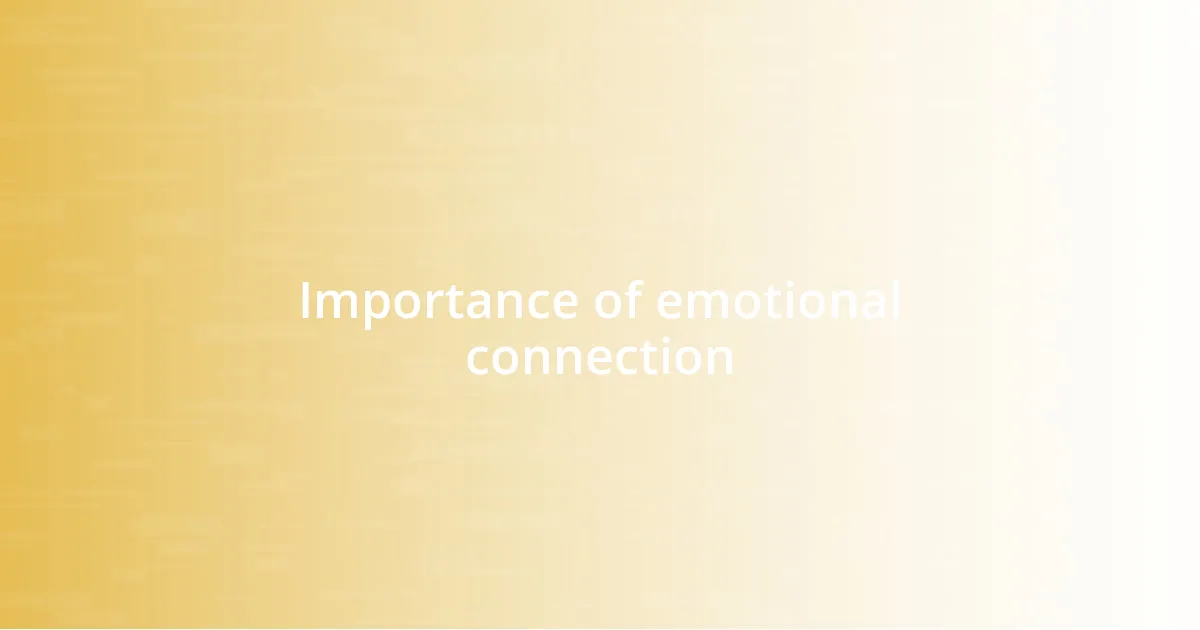
Importance of emotional connection
Emotional connection in lyrical storytelling is crucial because it transforms a mere recital of events into a heartfelt experience. I remember driving on a quiet road, a song came on that spoke of longing and nostalgia. As each phrase unfolded, it felt like the artist was echoing my unspoken thoughts, creating a bond that was both uplifting and cathartic. This is the magic of emotional resonance; it allows us to feel seen and understood in our most vulnerable moments.
- It fosters empathy: When lyrics articulate feelings or experiences similar to our own, we realize we’re not alone.
- It evokes memories: A song can transport us back to specific times, igniting emotions tied to those moments.
- It encourages reflection: Engaging with emotionally charged lyrics often leads us to contemplate our own lives and choices.
This deep emotional connection not only enriches the storytelling but also cements the listener’s bond with the artist, making the music a part of their personal narrative.
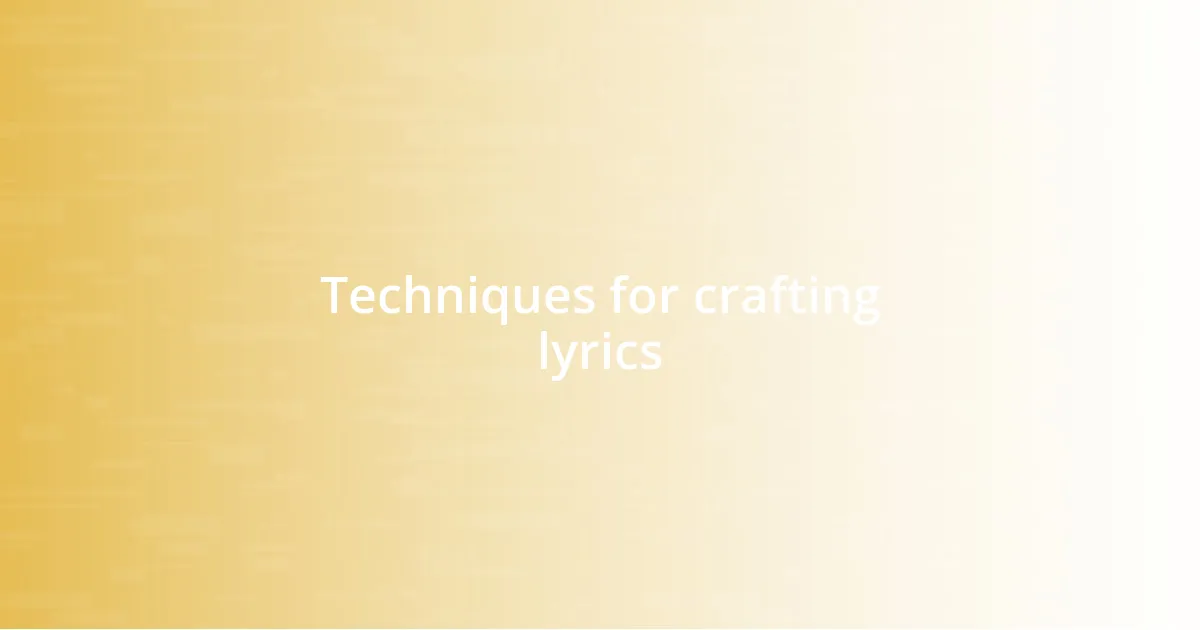
Techniques for crafting lyrics
Crafting lyrics is an intricate dance between words and emotions. One powerful technique I often use is employing metaphor to create layers of meaning. For example, I recall a time when I wrote a song about loss, comparing my feelings to a stormy sea. It added depth to my lyrics, allowing listeners to feel the turmoil while interpreting it in their own way. Isn’t it fascinating how one metaphor can unlock a flood of emotions?
Another key technique I appreciate is the use of repetition. When a line or phrase circles back throughout the song, it builds a sense of familiarity and reinforces the emotional weight. I remember hearing a song where the chorus echoed a heartfelt plea. Each repetition deepened my connection to the sentiment, making it almost impossible not to sing along. It’s like a mantra that stays with you long after the music stops.
Finally, incorporating specific imagery can elevate a song from good to unforgettable. Writing about a moment I had on a rainy afternoon, I described the sound of drops hitting the pavement and the smell of wet earth. These details transported me back to that place, allowing listeners to visualize the scene vividly. Doesn’t it make you wonder how a few carefully chosen words can create such a powerful connection? This technique brings stories to life, and that’s what I find so captivating in lyrical storytelling.
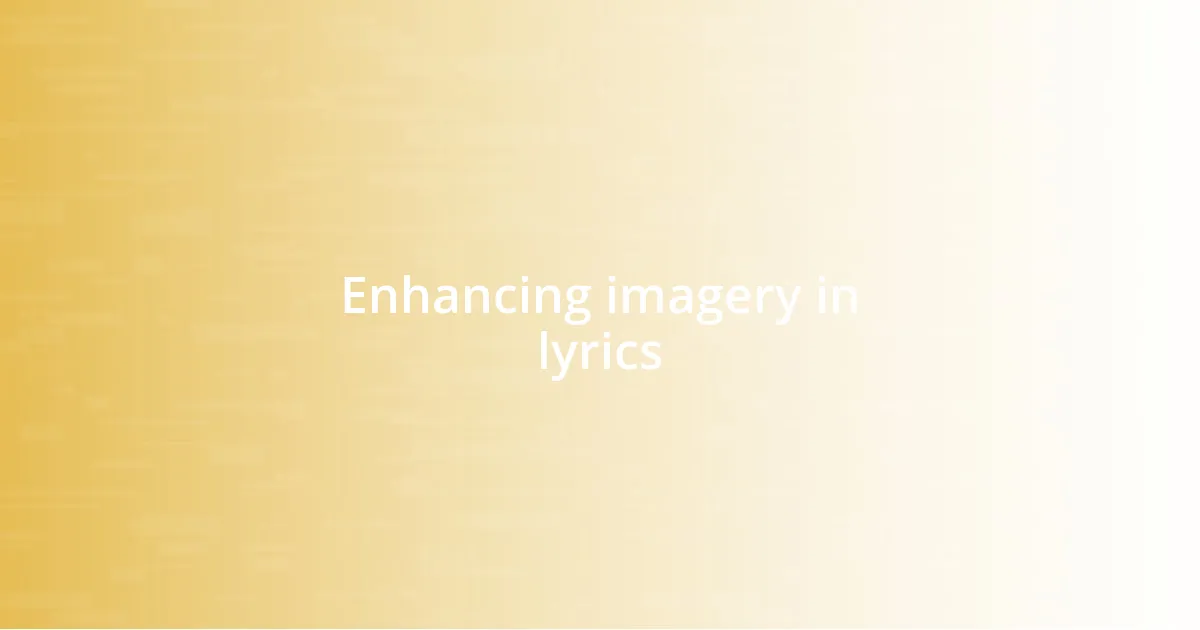
Enhancing imagery in lyrics
Imagery in lyrics plays a pivotal role in painting vivid pictures that resonate with listeners. I remember writing a song inspired by a summer night, where I described the golden glow of fireflies dancing in the warm air. It was as if I could almost see those tiny lights flickering in the dark, guiding the listener through a moment that felt both magical and serene. Isn’t it amazing how one image can pull someone into a memory they might have forgotten?
I also find that grounding lyrics in relatable experiences can intensify their impact. For instance, when I wrote about a rainy day spent under a cozy blanket, it connected with countless listeners longing for comfort. The image of raindrops tapping gently against the window creates a sensory experience that evokes both peace and contemplation. How often do you hear a lyric that takes you to a specific moment, filling you with warmth or nostalgia?
Incorporating sensory details is another effective way to enhance imagery. I recall crafting a line about the scent of fresh coffee brewing on a chilly morning. That particular detail seems small, but it evokes a comforting routine that many can relate to. It really does make you wonder how the slightest touch of detail can cultivate such strong emotions and connections within a song, turning an ordinary scene into something extraordinary. It’s this kind of ingenuity that keeps me inspired in my own lyrical storytelling.
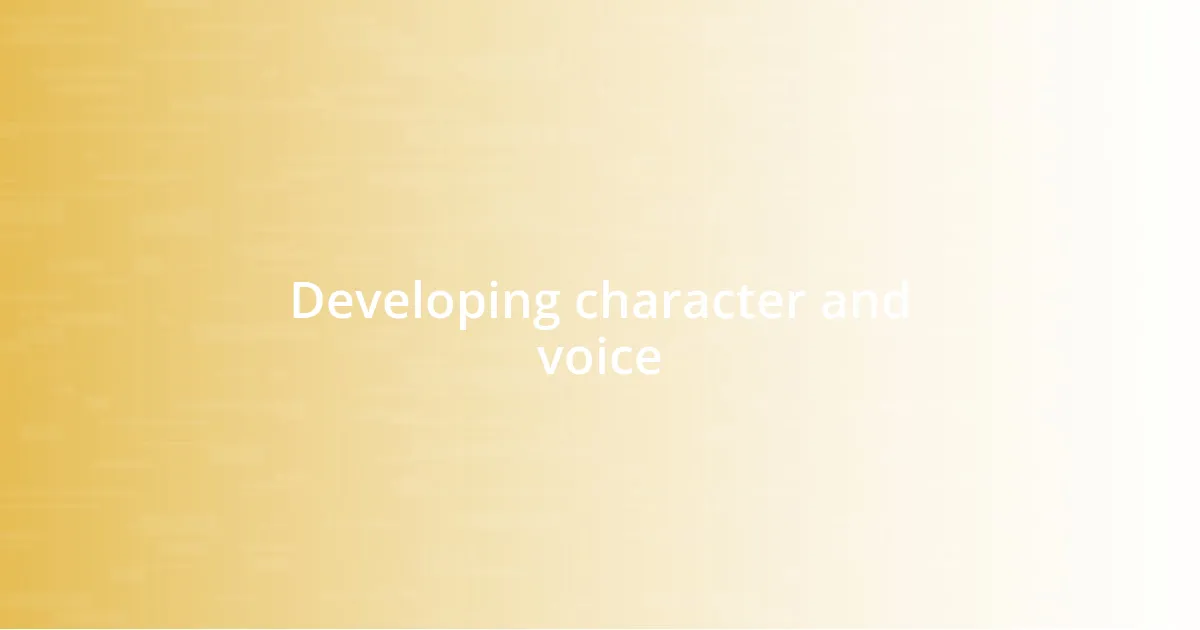
Developing character and voice
Developing characters and voice in lyrical storytelling is essential for crafting songs that resonate deeply. I remember writing a piece from the perspective of a heartbroken traveler. I really dug into her emotions, describing the ache of leaving everything behind. How does it feel to pull up stakes and venture into the unknown? By channeling her voice, I sought to bridge the gap between my experience and hers, allowing listeners to step into her shoes.
I often reflect on how distinct voices can elevate a song’s narrative. A few years ago, I wrote a duet featuring two contrasting characters—one hopeful and the other cynical. By intertwining their dialogues, I showcased their differing outlooks and drew listeners into their dynamic. It made me realize how enriching it can be to explore varied perspectives, adding depth and relatability to the story. Don’t you think hearing multiple voices can turn a singular experience into a shared journey?
The subtleties of character development also matter immensely. Sometimes, a detail as simple as a character’s favorite book or a cherished memory can reveal layers of their personality. In one song, I included a line about a character reminiscing over an old vinyl record, which not only shaped their nostalgia but made them feel tangible and real. This got me wondering—what little quirks or memories could you use to breathe life into your characters? It’s these nuances that invite listeners to connect, react, and ultimately invest in the lyrical journey.
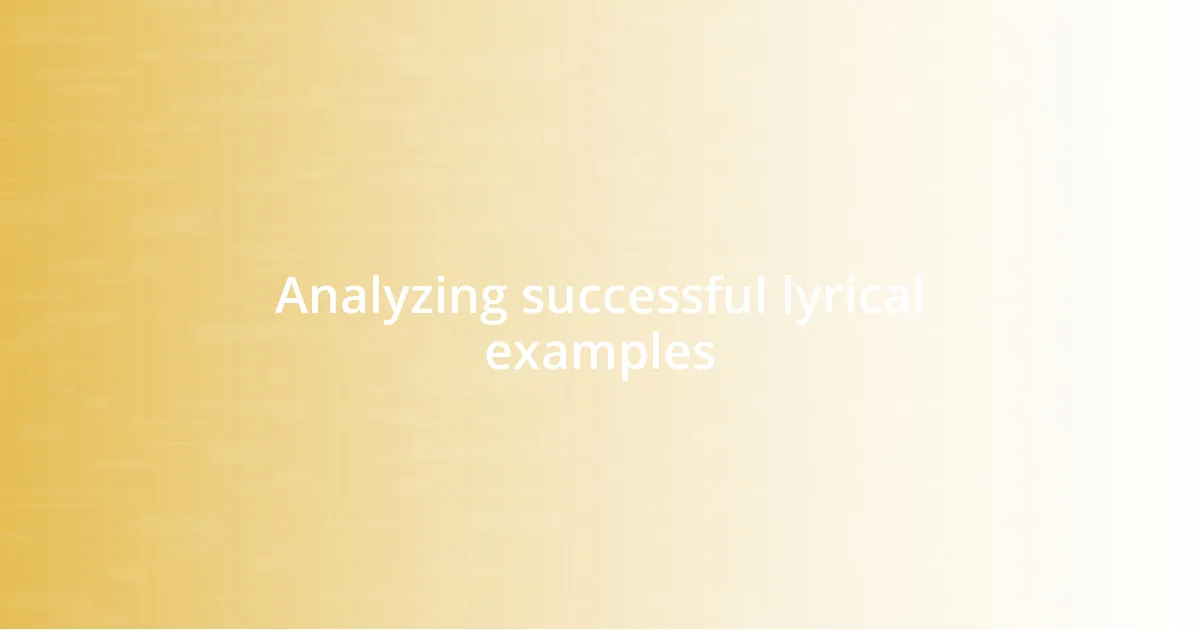
Analyzing successful lyrical examples
When analyzing successful lyrical examples, I often find myself captivated by storytelling that creates a strong emotional bond with the audience. Take, for instance, a song that explores the theme of loss. I can vividly recall writing lyrics about an empty chair at a family dinner table. That image alone stirred up such powerful feelings. Doesn’t it resonate deeply when a simple object symbolizes the void left by a loved one? This kind of imagery brings emotions to the forefront, making the listener relate to their own experiences of absence and longing.
I also appreciate lyrics that use clever metaphors to enrich the narrative. There’s one song I penned where I compared a fading love to a dying autumn leaf, falling slowly yet inevitably from a tree. This metaphor not only painted a vivid picture but also encapsulated the bittersweet nature of letting go. It really gets me thinking—how often do we cling to something we know is slipping away? Employing such evocative language enables the listener to engage deeply with the story being told.
